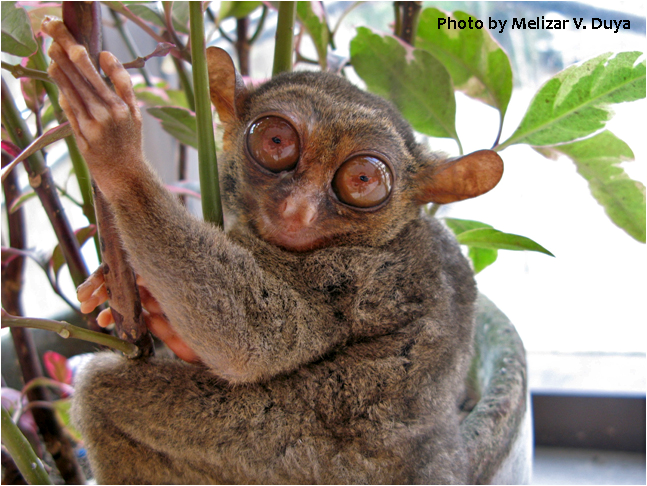Filtered By: Scitech
SciTech
Biologists confirm new tarsier from Dinagat Islands
Meet the Dinagat tarsier, the newest Philippine tarsier species.
The University of the Philippines announced this following genetic tests by a multi-country team of scientists.
"The tarsier found on Dinagat Island is distinct from its relatives in the Bohol-Samar-Leyte and Zamboanga-Mindanao phylogeographic clusters," the university said on its website.

Dr. Perry Ong of the UP Diliman Institute of Biology (IB) disclosed the group’s paper, “Conservation Genetics of the Philippine Tarsier: Cryptic Genetic Variation Restructures Conservation Priorities for an Island Archipelago Primate,” was published on PLOS ONE.
"(T)he identification of a new tarsier species by UP experts is welcome news and is expected to promote a new framework for tarsier protection and conservation in the country," said UP President Alfredo Pascual.
The new tarsier is part of the Dinagat-Caraga cluster, along with Surigao del Norte tarsiers., the scientists said.
Citing an examination of mitochondrial data, the researchers found "definitive evidence" that the Dinagat tarsier is a different species.
Ong hopes their research would led to improved tarsier conservation efforts in the country even as the Dinagat tarsier’s “taxonomic status is [still] being finalized.”
Meanwhile, co-author and Institute of Biology Professor Mariano Duya said the collaborative research allowed scientists to consolidate their work on Philippine tarsiers, and can provide “the big picture” to guide further studies.
Also, Ong said wildlife conservation strategies must be unique to the species because of differences in behavior and environment.
He warned applying an umbrella strategy on different species may lead to the decline or even extinction of some.
Different from Bohol tarsier
As early as 1973, Dr. Dioscoro Rabor, considered the “father of Philippine wildlife conservation,” had observed the Dinagat tarsier as “somewhat larger in size” compared to the Bohol tarsier.
In the 1980s, American zoologist Dr. Guy Musser noted the Dinagat tarsier's fingers and toes appeared shorter, wider, and more “stubby.”
For their part, the research group members said the Dinagat tarsier has darker hair and skin, especially on its fingers.
On the other hand, Ong said the differences were too subtle to establish the Dinagat tarsier was a different species.
Continuing research
Pascual said the UP, as the country’s premier research university, "will continue to produce new knowledge that will help formulate new policies on biodiversity management.”
UP co-authors in the study include Melizar V. Duya, and Adrian Luczon.
Other co-authors from the Philippines are Mae Lowe L. Diesmos and Arvin C. Diesmos while co-authors from the United States are Rafe M. Brown, Jennifer A. Weghorst, Karen V. Olson, Anthony S. Barley, Jacob A. Esselstyn, Nathaniel J. Dominy, Gillian L. Moritz, and Cameron D. Siler.
Myron Shekelle and Irene Neri-Arboleda are the co-authors from the Republic of Korea and Canada, respectively. — Joel Locsin/ELR, GMA News
Tags: tarsier, dinagatislands
More Videos
Most Popular



